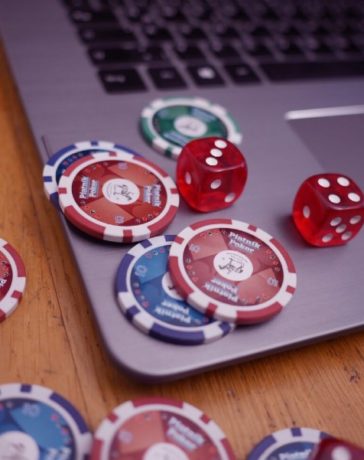Many of the Baccarat card counting systems out there that claim to work are based on pattern recognition. The system must be able to recognize certain patterns, such as ‘eights’ or ‘neat tens’, and this is an indication that a player should raise their bet.
But does pattern recognition in baccarat actually work? Does it really give you any added edge over the house or does it just get you more money in the machines?
Here’s What You Need to Know
According to Mr. Ong of WS88 in Singapore, pattern recognition systems are not just used in baccarat online, but are also used in other card games such as poker. In fact, they have been proven to work for the most part when studying the statistics of a certain deck.
It is generally agreed upon that these pattern recognition systems can be useful tools for gaining an edge over the house, especially when it comes to blackjack, where card counting is a more commonly accepted practice.
In PR gambling systems, a player uses his knowledge of past playing events to predict future playing events. In this way, the player attempts to control the casino edge in his favor.
The PR strategy for baccarat is easy to learn and requires only that you keep track of two things: the ratio of high cards (6,7,8) played to low cards (2,3,4) played and the ratio of tens played to non-tens played.
First, you must calculate a high card count (HCC) by counting the number of 6’s through 8’s dealt and dividing by the total number of cards dealt. Using this system, a hand that contains two 6’s would be worth 1.5 HCC points. A hand that contains one 6 and one 8 would be worth 1.33 HCC points, etc.
A hand containing three sixes would have a value of 3 HCC points and would therefore be your top card count.
Second, you must calculate the low card count (LCC) by counting the number of 2’s through 4’s dealt and dividing by the total number of cards dealt. Using this system, a hand that contains two 2’s would be worth 0.5 LCC points. A hand that contains one 2 and one 4 would be worth 0.37 LCC points, etc. A hand containing three twos would have a value of 1.5 LCC points and would therefore be your lowest card count.
It is important to note that LCC and HCC will increase at different rates as the deck dwindles down from tens to aces. You should expect both values to hit their maximum value somewhere between 13-18 cards left in the shoe, then begin dropping back off.
In order for pattern recognition to work, you must have a way to measure the HCC and LCC values against some known benchmark. In the past, this measurement was called “the line” or simply “the number.” The term “line” comes from the days before casinos would spin a wheel for each hand. Instead, they would use a chalk board with an imaginary line drawn across the center. When players and dealers agreed on a common number, they would wager at that level.
This system worked for some time until casinos began to notice an unsettling trend — there was too much money being bet on the banker’s hand side of the imaginary line! The problem was compounded when a player would place multiple bets on the table (banking sixes, banking eights, etc.).
However, when it comes to baccarat, pattern recognition has not really been proved to be very accurate at predicting winning hands.
The Downsides of Pattern Recognition
“One reason why these systems fail is because the baccarat deck has been created with a very high level of randomization. The cards are shuffled several times before each hand to ensure that they are as randomized as possible. This means that there is no real pattern to follow for the dealer or the player when it comes to betting,” adds Mr. Ong.
The other reason why these systems fail has to do with the nature of baccarat. Unlike card counting in blackjack, which can be very profitable due to the fact that there are obvious indicators when it is time to stand and when it is time to hit, baccarat requires a player to maintain an accurate count on only one hand — their own.
For this reason, maintaining an accurate count is much harder than in other games because there are no clear indicators telling the player when to bet and when to stay away.
Furthermore, baccarat is a game of chance. A round of baccarat involves two hands: one hand for the dealer and one hand for the player. The winner of the game doesn’t necessarily have to be the person with better cards, but the person who is dealt more favorable hands.
This fact alone indicates that pattern recognition in baccarat isn’t really possible because there are no patterns. This goes against what pattern recognition systems look for when determining if a hand should be bet on.
Lastly, many of these systems teach players to bet on all hands except ones that include a number of odd cards (6, 7, 8, or 9) in an attempt to beat the casino. This is another method that fails because baccarat dealers don’t have to stick with the same value when it comes to dealing two cards; unlike blackjack where they must hit on 16 and stand on 17.
In baccarat online and land-based, the dealer can stick with their original value regardless of how many odd cards they have been dealt because there is no automatic requirement to follow a predetermined rule when it comes to making hands; players and dealers are able to make their own decisions depending on what they are given from the deck.
For all of these reasons, pattern recognition is not a profitable method of playing Baccarat. One reason why some casinos are not against the use of these systems is because they make it easier for players to check their own hands and make wise bet decisions. This means that while they might not be profitable, they can help you preserve your bankroll.
Takeaway
The question of whether or not pattern recognition works in baccarat is one that requires a more complex answer than simply saying “yes” or “no.” There are many factors to consider when deciding if these systems will be useful for you and it will ultimately depend on what you’re willing to risk after having read the information provided here.
One thing to keep in mind when deciding whether pattern recognition works is that these systems have been proven ineffective in the past and it’s unlikely they’ll be effective for you at any point in the future. These systems fail because of the nature of baccarat, which requires a dealer to be able to make their own decisions regarding what hands should be dealt and which ones shouldn’t.
While it is possible to use some of these systems to help you check your own hand, the decision comes down to how much risk you are willing to take and if you believe in the effectiveness of pattern recognition in Baccarat.
Dom Paul


